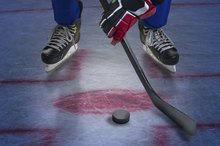Reasons for Arm Pain During Volleyball
Arm pain when hitting a volleyball can be due to a wide range of reasons 1.
If you are experiencing serious medical symptoms, seek emergency treatment immediately.
You can incur systemic-overuse damage after playing for years or develop a sudden injury by spiking the ball and applying excessive pressure on your arm at one time. The pain can emanate from damage to the tendons, muscles, joints or bones in your arm. See a doctor or orthopedist to assess the source of your pain before trying any home remedies.
Overuse
Common ailments incurred from overusing your arms include bursitis and tendonitis. Usually referred to as tennis elbow, lateral epicondylitis is a common source of pain among volleyball players 1. The condition is caused over time when the tendons in your forearm become frayed.
Every time you hit the ball, the pressure can cause inflammation and pain when you have tennis elbow. Wrist tendonitis is another common volleyball condition that occurs when swollen tendons in your wrist become inflamed 1. Bursitis typically attacks the elbow in volleyball players and could indicate a swollen bursa sac that becomes irritated and inflamed when you hit the ball 1.
- Common ailments incurred from overusing your arms include bursitis and tendonitis.
- The condition is caused over time when the tendons in your forearm become frayed.
Injuries
Tennis Elbow or a Torn Ligament?
Learn More
Spiking the ball can lead to a variety of sudden injuries such as wrist or finger sprains or breaks, rotator cuff injuries and dislocated shoulders. The pain, though not directly in your arm, usually emanates down your arm and throbbing continues until you get the source of the pain treated. Finger and wrist sprains are common injuries in volleyball when the force of the ball strikes your hand at an odd angle or with excessive force [1](https://www.domainnewsletter.com/domain/ArmRehab.com/ 'inline-reference::A.R.M.
Rehab: Volleyball'). Shoulder dislocation is particularly common and usually occurs from bending too far backward or upward to hit the ball. Pain from a dislocated shoulder is excruciating all the way down to your fingertips.
- Spiking the ball can lead to a variety of sudden injuries such as wrist or finger sprains or breaks, rotator cuff injuries and dislocated shoulders.
- The pain, though not directly in your arm, usually emanates down your arm and throbbing continues until you get the source of the pain treated.
Treatment
You need immediate medical attention if you dislocate your shoulder when you hit the ball.
You’ll be fitted with a sling to immobilize your arm and prescribed anti-inflammatory medication. Sprains typically are treated with rest, ice, compression and elevation. Sprained wrists and fingers may be wrapped to immobilize them, and you’ll be instructed to keep your arm elevated as the sprain heals, applying ice when it swells.
A doctor may wrap your arm just below the elbow if you’ve developed tennis elbow, and you’ll be encouraged to rest your arm as much as possible.
Cortisone shots may be given to treat bursitis in your elbow, or you may have to undergo an outpatient surgical procedure so that the sac can be drained of the fluid buildup that’s causing your pain. Wrist tendonitis also is treated with rest and cortisone shots.
- You need immediate medical attention if you dislocate your shoulder when you hit the ball.
- Sprained wrists and fingers may be wrapped to immobilize them, and you’ll be instructed to keep your arm elevated as the sprain heals, applying ice when it swells.
Prevention
Shoulder Pain After a Workout
Learn More
In 2010, more than 58,000 volleyball injuries were treated in emergency rooms in the United states, according to the American Academy of Orthopaedic Surgeons 12. While finger, elbow and shoulder injuries are most prevalent, volleyball players also experience an inordinate amount of ankle injuries as well 1.
One of the most important steps you can take to prevent arm pain when you hit a ball is to spend sufficient time stretching before you play. Doing warmup exercises for three minutes, such as running in place or riding an elliptical trainer, can prepare your body for play, followed by 10 minutes of slow, controlled stretching to help you avoid overuse damage as well. Maintaining your fitness levels in the off-season reduces your risk of injury. Wear protective gear if necessary and make sure the space you play in is safe and free of obstacles.
- In 2010, more than 58,000 volleyball injuries were treated in emergency rooms in the United states, according to the American Academy of Orthopaedic Surgeons 1.
- Doing warmup exercises for three minutes, such as running in place or riding an elliptical trainer, can prepare your body for play, followed by 10 minutes of slow, controlled stretching to help you avoid overuse damage as well.
Related Articles
References
Writer Bio
Linda Ray is an award-winning journalist with more than 20 years reporting experience. She's covered business for newspapers and magazines, including the "Greenville News," "Success Magazine" and "American City Business Journals." Ray holds a journalism degree and teaches writing, career development and an FDIC course called "Money Smart."









